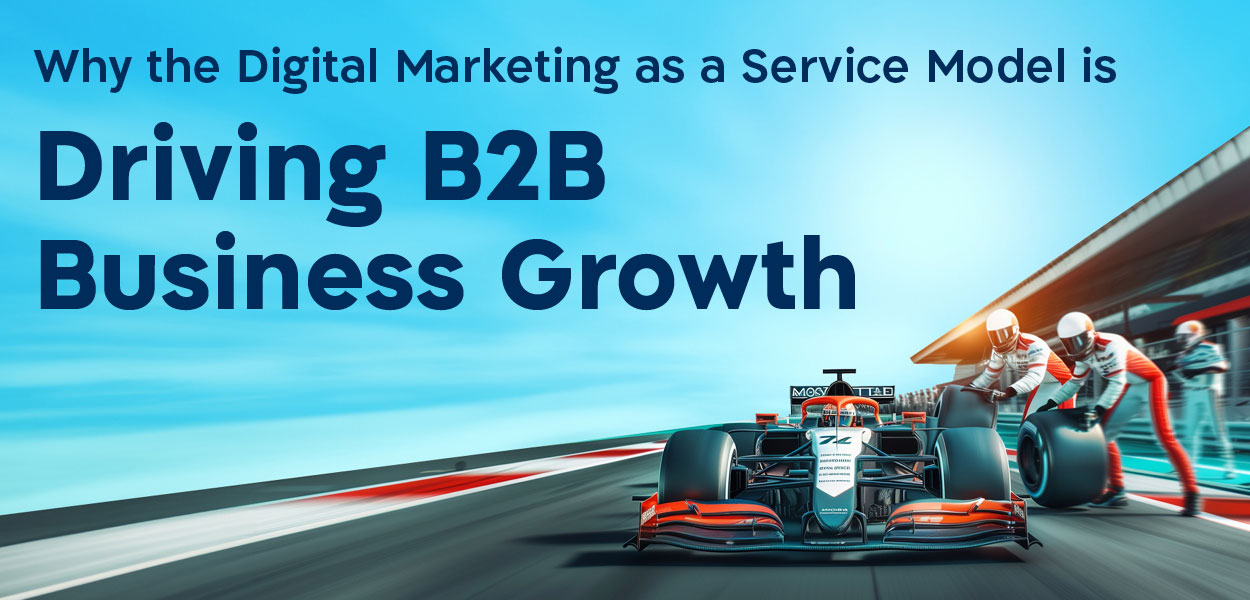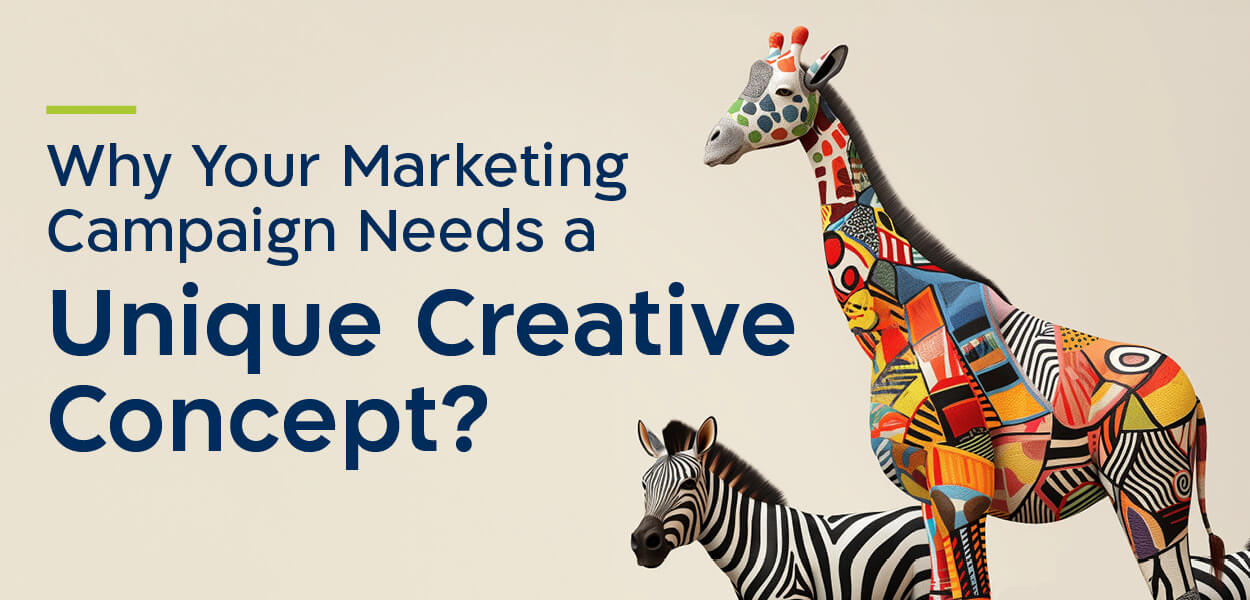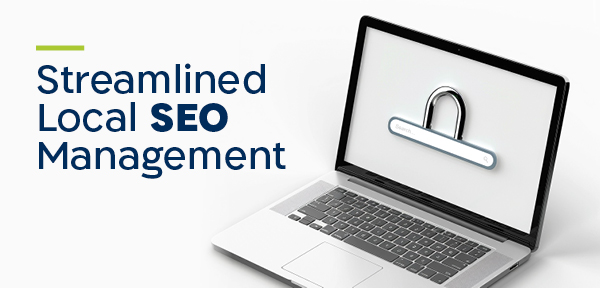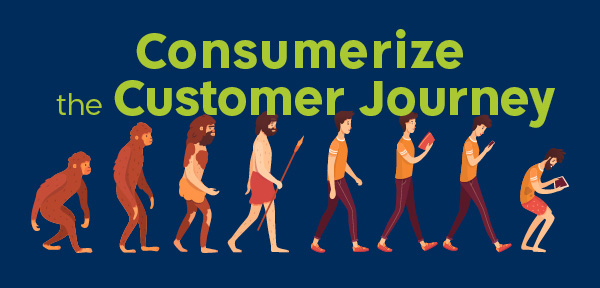The BL[OZ]
Even Great Content Can Miss the Mark and How a Strategy Pause Can Make All the Difference
By
Liron Ramot
, 22/09/2024
Digital marketing is essential for B2B companies to reach their target audience, generate leads, and stay competitive. Many lack the resources to handle it in-house, making outsourced digital marketing a valuable solution.
min read
Even the most well-crafted content can sometimes fail to deliver the results you want. As our world gets more digital, it’s not uncommon for businesses to pour money and time into creating high-quality content, blogs, videos, social media posts, and eye-catching designs, only to find that their efforts don’t connect with their target audience or drive results. In most cases, this isn't a reflection of the campaign's quality, but a sign that it simply doesn't align with the company's "big picture" and goals.
Consider this: A company puts together an insightful blog post packed with valuable information and engaging visuals or an expert educational webinar. The problem is, if that campaign isn’t aligned with the brand’s broader marketing goals and strategy or tailored to the specific needs and behaviors of its audience, it’s likely to miss the mark. Without a strategic framework guiding planning, production, and distribution, even the best campaign can get lost in the noise of the internet, failing to generate traffic, engagement, or conversions.
Your campaign could have all the right elements in place - compelling storytelling, high production values, and a strong call to action, but without the strategic groundwork, it is likely to struggle to achieve meaningful results.



Why Often Misses the Mark?
Creating digital content that truly connects with your audience is no small feat. The landscape is crowded, the competition is intense, and audiences are more critical than ever. While many businesses pour resources into content creation, they find that their efforts do not translate into engagement or conversions. Most of the time, it's just a lack of alignment between content and the organization's overall business goals. Without a clear, strategic framework, content can become scattered, inconsistent, and ultimately ineffective. This is exactly why companies should consider stepping back to take a broader view. Rather than rushing ahead with the next campaign or content piece, a strategic pause to reassess and realign can be incredibly valuable. This is the essence of the discovery and study processes, a strategic approach that will build a solid foundation for your digital marketing campaign.
Understanding the Study Process
The primary aim of the Study process is to provide a focused analysis of your current digital marketing efforts. It’s about taking a step back and evaluating what’s working and what isn’t, allowing for strategic adjustments that enhance performance. This process is ideal for annual strategy reviews, specific campaign assessments, or when there’s a need to refresh the approach to your digital marketing.What It Achieves?
The Study process delivers actionable insights that help fine-tune your digital strategy. By concentrating on specific areas, such as target audience engagement, campaign effectiveness, or digital content performance, the Study process allows businesses to make data-driven decisions that improve ROI. It helps you understand where your content may be falling short and offers concrete steps to address these issues.How It’s Done?
- Initial Consultation: In-depth session to clarify your business’s current digital marketing objectives and identify the key areas that require attention.
- Targeted Research: Assessing the performance of specific campaigns, audience engagement metrics, and the effectiveness of your content in driving desired outcomes.
- Strategy Refinement: Adjust and optimize existing strategies based on findings.
- Implementation and Monitoring: Monitoring and tweaking the revised strategy as needed.

Exploring the Discovery Process
The Discovery process offers a broader, more comprehensive approach to digital strategy development. It’s designed for businesses that are launching new brands, undergoing a rebrand, or expanding into new markets. The Discovery process is about building a solid strategy that aligns with long-term business goals and keeps consistency across all digital channels. The Discovery process offers a deep dive into your brand’s identity, your market, and your audience. It provides a holistic understanding of your brand’s digital landscape. It uncovers opportunities for differentiation, identifies potential challenges, and sets a strategic direction that makes sure all digital efforts are aligned with your overarching business goals. One of the unique offerings of the Discovery process is the development of a visual language for your digital activities. This component ensures that your brand communicates consistently and effectively across all platforms, enhancing brand recognition and coherence, which is not typically included in the Study process. The goal is to develop a strategy that meets immediate needs as well as positions your brand for long-term success. This process is particularly beneficial for companies preparing for major changes, such as a new brand launch or market expansion.How It’s Done?
- Kick-off Meeting: Clarify goals and challenges.
- Comprehensive Research and Analysis: A thorough examination of the market, competitors, and internal capabilities. Key activities include identifying Buyer Personas, conducting a Competitive Digital Analysis, and performing a detailed SEO review.
- Digital Strategy Development: Based on the research insights, a full-scale digital strategy is formulated. This includes defining content pillars, creating a media plan, and developing creative visual guidelines that ensure brand consistency across all platforms.
- Presentation and Implementation: Once approved, the strategy is implemented, with ongoing support to ensure its success.

Why Discovery Is the Better Choice?
While both the Study and Discovery processes offer valuable insights and strategic direction, the Discovery process stands out as the more comprehensive and long-term solution. Here’s why Discovery might be the better choice for most businesses: Long-Term Strategic Value Discover aims to build a digital strategy that will serve your business for years to come, not just address immediate needs. By conducting thorough research and analysis, the Discovery process helps you create a strong, adaptable strategy that can evolve with your business. This long-term focus is particularly valuable in today’s fast-paced digital environment, where trends and technologies are constantly changing. Comprehensive Insights Unlike the Study process, which offers a more focused review, the Discovery process provides a holistic view of your digital strategy. This includes everything from a detailed SEO review to the development of creative visual language guidelines. These insights are crucial for making sure that all aspects of your digital presence. From content to design, everything is aligned with your brand's goals. Flexibility and Customization One of the key benefits of the Discovery process is its flexibility. The process can be adjusted to your specific needs - whether you’re launching a new product line, rebranding, entering a new market, or looking to create a unified visual identity for your campaigns. This customization helps make sure that your digital program is relevant, consistent, and effective. With the digital marketing arena being so fast-paced, it’s easy to get caught up in the rush to produce content and launch campaigns. Taking the time to reassess your digital strategy allows you to see what’s really working and where you might need to adjust course. It’s not simply about tweaking a campaign here or there, but rather making sure that every piece of content you create is connected to your broader goals and truly resonates with your audience. Whether you’re considering the focused approach of the Study process or the more comprehensive Discovery process, this strategic pause is crucial so your content doesn’t just reach your audience—it makes an impact.Why the Digital Marketing as a Service Model is Driving B2B Business Growth
By
Liron Ramot
, 17/06/2024
Digital marketing is essential for B2B companies to reach their target audience, generate leads, and stay competitive. Many lack the resources to handle it in-house, making outsourced digital marketing a valuable solution.
min read
Digital marketing is crucial for B2B companies to effectively reach their target audience, generate leads, make data-driven decisions, and stay competitive in the market. However, while most B2B businesses see the need for digital marketing, they don’t necessarily have the team, tools, or budget to handle it in-house.


Digital Marketing as a Service (DMaaS) is a model that works
As an on-demand model, DMaaS allows your company to access a wide range of digital marketing expertise, tools, and resources without hiring and maintaining an in-house marketing team. While digital marketing toolboxes, tactics, and strategies differ according to client needs, they frequently comprise smart content, webinars, outreach and Account-Based Marketing (ABM), Search Engine Optimization (SEO), sponsored campaigns, and marketing automation to reach target audiences and drive traffic or conversions.4 great reasons why DMaaS makes sense for your B2B business
- Access top-tier talent without the overhead costs associated with traditional hires Budget constraints and HR challenges may be standing in the way of hiring an in-house digital marketing manager. DMaaS offers a cost-effective solution, allowing your company to alleviate the burden of recruitment, training, and retention, freeing up your resources to focus on your core business operations.
- Effectively navigate the complex digital landscape Tap into the expertise of seasoned professionals who possess a comprehensive understanding of digital marketing strategies, tactics, and execution skills that can help you achieve your marketing objectives.
- Adapt to changing market conditions Your business has to constantly adapt to market needs and business growth. DMaaS has built-in flexibility, allowing your business to scale up or down, based on your changing needs and budget.
- Set goals, measure results & change the game plan as needed In the dynamic world of digital, the goalposts are constantly changing. By setting key performance indicators (KPIs) and using accessible analytics tools such as those available in HubSpot, you can easily track the success of your marketing campaigns, optimize strategies as needed, and demonstrate the value of using DMaaS services.

Follow the yellow brick road
As a global B2B marketing expert, OZ has spent years building a strong reputation. Digital trends may come and go, but dedication, commitment to success, experience, and professionalism never go out of fashion. At OZ, we believe that long-lasting partnerships are based on deep listening, understanding, and transforming your goals into measurable results. That’s why many of our clients stay with us when they move companies, and why many clients come to us by word of mouth.Your dedicated digital account manager will be your work BFF
With OZ, your account will be managed by a dedicated digital account manager backed by a multidisciplinary team with expertise in every aspect of digital marketing, and more. Your OZ manager is always backed up by a team comprising a graphic designer, strategist, and content writer. Your OZ manager becomes an integral part of your marketing team, offering full commitment and dedication to your company's goals. It's not just one person, but an entire team of digital experts working behind the scenes to drive your digital marketing success. Every member of the OZ team brings with them a high standard of professionalism and expertise gained from working with numerous B2B companies across various industries.
Boost your bottom line
DMaaS enables you to reach and engage with your target audiences effectively, measure the success of your campaigns with precision, and adapt your strategies in real time based on insights and feedback. It’s there to act as a driving force in your marketing strategy, enabling you to access the resources and expertise required to enhance your brand visibility, attract and retain customers, and drive sustainable growth.Don’t Get Lost in the Scroll: Why Your Marketing Campaign Needs a Unique Creative Concept
By
Timrat Erez
, 20/05/2024
Unlock the potential of every marketing move with the right creative concept that distinguishes your campaigns from the day-to-day brand strategies.
min read
Imagine this: you're scrolling through your social media feed, bombarded with content. Posts whizz by in a blur of colors and text, each fighting for a sliver of your attention. Suddenly, something stops you.
A captivating image, a thought-provoking headline, a story that unfolds in a way you haven't seen before. This is the power of a creative concept campaign, uniquely crafted to stand out and resonate deeply.
When you think of a targeted product or service marketing campaign, it's not the broad strokes of the brand that should catch the consumer's eye, but the unique twist of the campaign's creative concept. Like various products under a single brand umbrella, each with their unique packaging to highlight different features and appeal to different demographics, every marketing move should also stand out on its own, supported by what we like to call "creative cracking."
So, how do you stand out from the crowd and make them stop, read, and want what you offer?
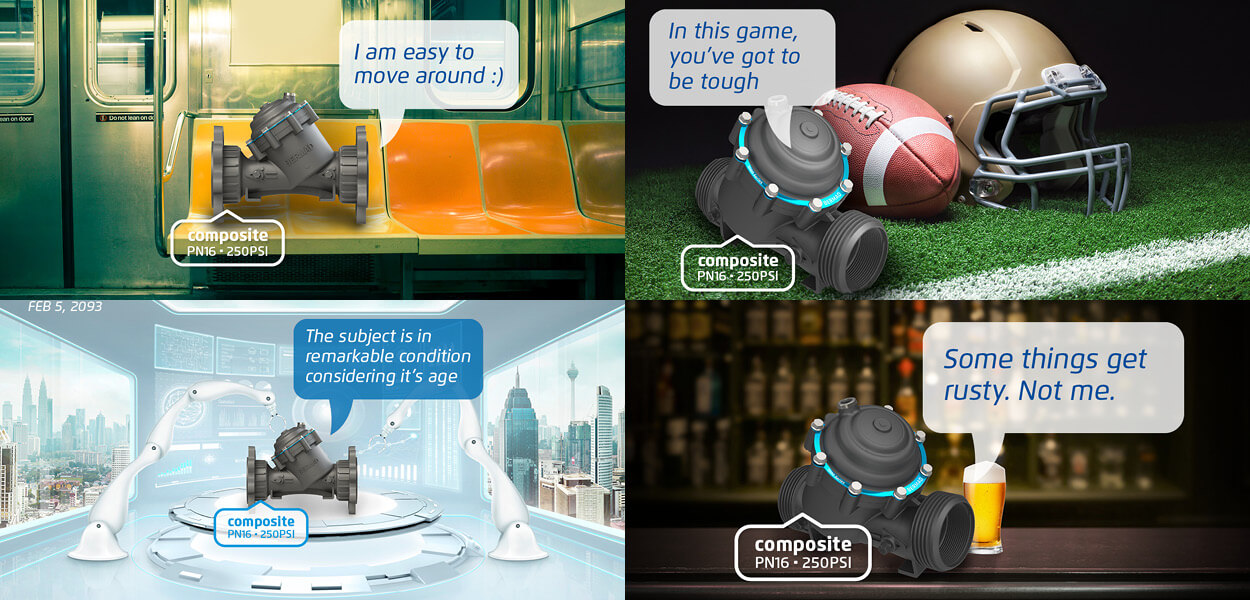
Creative Cracking: The Art of Standing Out
Creative cracking refers to the process of developing a distinctive creative concept that adds a layer of uniqueness and power to your digital marketing campaigns. It's about breaking through the norm, providing a fresh perspective that draws attention and maintains it, and achieving a high rate of engagement. This process is like how different products under the same brand differentiate themselves through packaging. Similarly, each marketing move should encapsulate a distinct message and visual style that communicates its unique value proposition and resonates with specific target audiences. A successful marketing campaign must go beyond the typical visibility of the brand. It must be distinctive in its visual presentation and messaging. This requires a deep understanding of the product's features, qualities, and the demographics it aims to attract. By aligning these elements with a creative concept that pops, the campaign delivers its message with increased impact and memorability.When to Launch a Creative Concept?
So, how do you know when it's time to invest in a creative concept campaign? Here are a few key moments: • Launching a New Product: Generate excitement and buzz around your latest offering with a campaign that speaks directly to your target audience's needs and desires. • Entering a New Market: As you venture into uncharted territory, a creative concept campaign can help you build brand awareness and establish yourself as a leader in the new space, enhancing your brand recall. • Making a Big Announcement: Whether it's a shift in your industry focus or a strategic partnership, a creative campaign can add weight and memorability to your message.From Insights to Impact: Our Creative Concept Process
At Oz Global, we understand the power of storytelling real-time marketing. We take a data-driven approach to developing creative concepts, working closely with you to understand your specific needs, target audience, and brand voice. Here's how we do it - Laying the Groundwork: Gathering Information and Formulating Ideas Our approach begins with gathering comprehensive information about your business objectives, the competitive landscape, and your target audience's preferences. This phase is crucial as it lays the groundwork for crafting marketing moves that are not only creative but also strategically aligned with your business goals. Visuals and Messages that Speak Volumes With a clear understanding of your marketing goals and audience insights, we move ahead to shape the visual and narrative elements of your campaign. This involves selecting colors, typography, and imagery that align with the brand's identity while introducing something new and exciting. Continually experimenting and testing directions, before zooming in, selecting, and finetuning the winning concept. And a new creative direction (or two) is born. Concept Ideas: The Survival of the "Fittest" Once you choose the path that best aligns with your vision, we'll get working on crafting an engaging campaign that extends across your channels. From a captivating landing page to eye-catching social media banners, every touchpoint will, from this moment on, speak the same creative language, cementing your brand identity, generating buzz, and driving high-rate engagement. Bringing Creative Concepts to Life After finalizing the design, we bring the creative concept to life across various platforms and touchpoints. Whether it's digital ads, social media content, or physical marketing materials, every element is designed to reflect the unified creative concept, ensuring consistency and boosting brand recall.Why Creative Concepts are Marketing Gold
To break through the noise and engage professional audiences effectively in B2B marketing, creative concepts are a must. With innovative marketing strategies, that tap into your audience's emotions (emotional appeal), a standard product launch can turn into a compelling business story that lands on the desks of decision-makers. Creative concepts help to raise the perceived value of a product or service and build meaningful connections with your customers, driving conversions and strengthening long-term partnerships. By prioritizing creativity, B2B companies can make sure their marketing efforts are seen, remembered, and acted upon. And don't forget the power of a clear call to action (CTA) during a targeted product or service marketing campaign! Whether it's encouraging a visit to your dedicated landing page, downloading your white paper, or signing up for an upcoming webinar, a strong CTA will ensure your audience knows exactly what you want them to do next.Your Story, Amplified
Employing a unique creative concept does more than just attract attention, it amps up all your marketing efforts, by - - Standing out: It separates your campaign marketing moves from your ongoing brand marketing programs, helping your campaign stand out. - Boosting Engagement: Adding visually appealing and message-oriented concepts helps make a campaign more memorable and engaging. - Building Long-term Brand Recall: Just as unique packaging can make products memorable, unique creative concepts can help marketing moves linger in the minds of consumers, helping to achieve long-term brand recall.
A Final Thought
For a marketing move to be successful, it needs a strong creative element. In the same way that different products of the same brand thrive in unique packaging, each marketing campaign needs its own creative concept to make sure it speaks directly and powerfully to the target audience. Not only does it boost visibility, it leaves a lasting impression. So, are you ready to break free from the monotonous scroll and make a lasting impact? Let us help you develop a creative concept campaign that gets noticed, remembered, and drives real results.Is HubSpot’s Content Hub the MVP of Your Content Marketing Team?
By
Mayrav Galor
, 05/05/2024
Constantly creating high-value content is a neverending story — there’s always a new chapter to write. Having created a piece of content, it needs to be repurposed into different media for different marketing channels
min read
A content marketer’s job is never done
Constantly creating high-value content is a neverending story — there’s always a new chapter to write. Having created a piece of content, it needs to be repurposed into different media for different marketing channels. It also needs to be managed – the performance of every piece of content needs to be tracked, to see how it’s performing, draw informed conclusions, and new content created that delivers even better results.The quest for great content
The new hero in the marketer’s quest to create and manage memorable content is Content Hub. It’s the all-in-one AI-powered content marketing software in HubSpot that will help you devise and deliver content to fuel the entire customer journey. As a content specialist, you may already be cringing. Are you about to be made obsolete? Absolutely not! While Content Hub is an exceptionally powerful platform, it’s there to empower you. It requires savvy marketers to make it work to its full capabilities – which ultimately will make your life a lot simpler and help you focus on being creative. Before you roll your eyes, we highly recommend you give it a test run. Trust us, you’ll be pleasantly surprised.What can Content Hub do for you?
In a nutshell, it can help you gear up your marketing strategy and put it into action. You can run and monitor every aspect of your marketing campaigns — creating everything from blog posts, emails, social posts, and more. Let’s dive in and take a look at the key feat- AI blog post generator- based on your description of what your blog is about and keywords, it creates a list of editable titles, together with monthly search volume (MSV), difficulty to rank, and keyword intents. Once you’ve selected the title you want, it provides a blog post outline. You have complete flexibility to add paragraph headings, remove those you don’t want, and add talking points. From there, it generates an entire blog ready for you to edit. Here’s when you put your mark on the copy, ensuring it’s on message and speaks your brand’s language. HubSpot is way ahead of you, providing a tool that allows you to define your brand voice using past writing samples. Once you’ve edited the blog to your satisfaction, you can preview it before publishing it. But wait, you need an image!
- AI image generator- simply describe the image you want (e.g. a steaming cup of hot coffee sitting on an office desk with a pair of spectacles beside it), decide on a style, and hit generate. Now, you can crop and edit your royalty-free image in the correct ratio for your blog posts, landing pages, marketing emails, and social posts.
- Blog post narration- with this handy feature, you can easily create audio from your blog content, customizing the tone and human voice before adding it to your blog or using it for different channels.
- AI language translation- translate your blog into multiple languages with a click. Voilà! Votre traduction est prête.
Drum roll, please! Killer feature coming up
Probably the most exciting tool in the Content Hub toolbox is Content Remix, which allows you to repurpose your content for multiple channels and formats in just a few clicks. Blink and it’s done. Here too, your sharp eye, copywriting chops, and editing muscles will come into play as you tweak the content until it’s just right.But that’s not all…
Much like the shopping channel, there really is more! You can also create podcasts, smart content, landing pages and forms, CTAs, chatbots, and live chat. With HubSpot’s App Marketplace, you can create video content, engaging web experiences, and compelling design assets.What happens the day after you unleash your content to the world?
You can easily track the performance of every piece of content you create, so you can leverage what’s working and drop what’s not.
MVP or VIP?
That brings us back to our original question: Is HubSpot's Content Hub the most valuable player of your content marketing team? Our experience shows that it can be a very important player greasing your content wheels —with you in the driver’s seat to define the strategy and goals, refine the messaging, customize it to your brand, and add those crucial finishing touches. It’s a valuable addition to the HubSpot platform that can simplify and streamline both the creation and management of your company’s content. Ready to give it a try? Ask our HubSpot expert for a demo.Unlock SEO Automated Success: Top 7 SEO Strategies You Can Automate with Make (Integromat)
By
Orly Gilad
, 07/03/2024
Are you overwhelmed by the relentless pace of digital marketing and the constant need for SEO optimization? Imagine if you could put some of those tasks on autopilot. That's where Make (formerly Integromat) comes into play, offering a way to supercharge your SEO strategies with automation. Let's delve into seven automation strategies that can not only save you precious time but also improve your website's standing in search engine results.
min read
Are you overwhelmed by the relentless pace of digital marketing and the constant need for SEO optimization? Imagine if you could put some of those tasks on autopilot. That's where Make (formerly Integromat) comes into play, offering a way to supercharge your SEO strategies with automation. Let's delve into seven automation strategies that can not only save you precious time but also improve your website's standing in search engine results.
1. Competitor Analysis Automation
Imagine having a secret window into your competitors' strategies, giving you the upper hand. By automating the tracking of their blog updates, keyword usage, and SEO maneuvers, you're essentially doing just that. It's like playing a strategic game where you're always one move ahead, nimbly navigating through the ever-changing landscape of digital competition. For Example: Automatically tracking a competitor’s blog updates and keyword changes.How-to:
- Set Up Triggers: Use RSS feeds or webhooks to monitor competitor blogs or websites.
- Extract Key Data: Use Make scenarios to automatically extract new content details such as titles, keywords, and descriptions.
- Analyze Changes: Use SEO tools like SEMrush or Ahrefs to analyze any new keywords or strategies they're employing.
- Send Reports: Configure Make to send periodic reports with this data to your email or Slack.
2. Streamlined Local SEO Management
Streamlining your local SEO tasks, like keeping Google My Business listings up to date and monitoring reviews, can make a big difference in how you rank locally. Automation takes the heavy lifting out of the equation, making sure your local presence is both accurate and compelling without constant manual oversight. For Example: Updating and monitoring Google My Business listings for multiple locations.How-to:
- Connect to Local SEO Tools: Integrate with tools like Moz Local or Yext.
- Automate Updates: Set up processes to automatically update listings with new hours, photos, or responses to reviews.
- Monitor Reviews: Get alerts for new reviews to respond quickly.
- Reporting: Generate regular reports on listing performance and local search rankings.
3. Image Optimization on Auto-Pilot
Automating the optimization of images on your website can significantly boost page performance. Faster loading times not only enhance the user experience—a key SEO factor—but also free up your time to focus on other aspects of your website. For example: Automatically optimizing images uploaded to your CMS. What can I do?- Monitor New Uploads: Set up a trigger for when new images are uploaded to your CMS.
- Connect to an Image Optimization Tool: Use services like TinyPNG or Kraken.io within Make.
- Optimize and Replace: Automatically optimize the images and replace the originals with the optimized versions on your site.
4. Efficient Content Research - Capitalize on Trending Topics
Automating your content research can keep you ahead of the curve. By pulling in trending topics from social media and news outlets, you can craft content that truly speaks to your audience and attracts more visitors, all while saving time on manual research. For Example: Gathering trending topics from social media and news feeds. What can I do?- Set Up Social Media Triggers: Monitor keywords and hashtags on platforms like Twitter or Reddit.
- Integrate with News Aggregators: Use tools like Feedly to pull in trending topics.
- Collect and Analyze Data: Aggregate this data for analysis to identify popular subjects.
- Generate Content Ideas: Use this data to inform your content creation strategy.
5. Automated SERP Analysis - Monitor Your Keyword Success
Automated SERP analysis allows you to monitor your keyword rankings effortlessly. This ongoing oversight offers crucial insights, enabling you to tweak and enhance your SEO strategies for better results, without the need for constant manual checks. For Example - Monitoring search engine result pages for selected keywords.What can I do?
- Use SEO Tools: Integrate with tools like Moz or Ahrefs.
- Set Keyword Triggers: Monitor specific keywords and get updates on their SERP rankings.
- Analyze Data: Collect data on rankings, featured snippets, and other SERP features.
- Adjust Your Strategy: Use these insights to refine your SEO strategy.
6. Proactive Broken Link Management - Maintain a Healthy Website
By automatically detecting and fixing broken links, you're ensuring your website remains navigable and SEO-friendly. This kind of proactive management keeps your site in top shape, enhancing both the user experience, and your SEO profile with minimal effort on your part. For Example: Regularly scanning your website for broken links.What can I do?
- Schedule Regular Scans: Use tools like Screaming Frog or Broken Link Checker.
- Integrate with Your Website: Connect these tools to your CMS.
- Automate Notifications: Set up alerts for when broken links are found.
- Quick Repair: Use these alerts to promptly fix or replace broken links.
7. Social Media Engagement Tracking - Understand Your Audience Better
Automatically tracking your social media engagement gives you a clearer picture of what resonates with your audience. This insight allows you to adjust your content and SEO strategies to better align with audience preferences, streamlining your efforts for more effective engagement. Example: Analyzing engagement on your social media posts.How-to:
- Connect to Social Platforms: Integrate with platforms like Facebook, Twitter, LinkedIn.
- Gather Engagement Data: Collect likes, shares, comments, and other engagement metrics.
- Analyze Trends: Use this data to understand what content resonates with your audience.
- Report and Refine: Generate reports for your team to review and refine your social media strategy.
Account Based Marketing (ABM) Vs. Lead Generation
By
Guy Toledano
, 17/08/2023
Are you struggling to decide between account-based marketing (ABM) and Lead Generation for your business? In this blog, we explore the key differences between the two strategies and how they can be used together to achieve optimal results. From understanding the benefits of demand generation to utilizing ABM for "land and expand" tactics. This guide provides valuable insights for marketers looking to boost their ROI. Additionally, the blog discusses how to effectively target the two main types of LinkedIn users to generate leads and increase engagement.
min read
Account-based marketing (ABM) and lead generation are two powerful strategies for generating revenue and boosting return on investment (ROI). While both approaches have their own unique benefits, it's important to understand the key differences between them and how they can be used together to achieve optimal results.
Lead generation, the core of demand generation, is a strategy that involves generating a large number of new leads for the sales team by targeting specific markets and industries. This approach is ideal for creating awareness and interest in a product or service, and can be done through various channels such as LinkedIn Campaign Manager. In contrast, account-based marketing (ABM) is a targeted approach that focuses on reaching out to specific named accounts, rather than a broad audience. ABM is designed to engage with the right accounts and create personalized content that captures their attention and drives further engagement.
One key benefit of demand generation is that it brings leads in, at the top of the funnel and nurtures them until they become an opportunity for the sales team. However, as the market becomes saturated, the time, money, and resources needed to generate leads can eventually outweigh the results, leading to diminishing returns. This is where ABM comes in. By focusing on specific named accounts, ABM allows marketers to "land and expand" by targeting bigger fish that match the ideal account profile (IAP). This allows for a more efficient use of resources and a higher return on investment.
 While ABM and demand generation may seem like competing strategies, they can actually be used together to achieve optimal results. For example, demand generation can be used to create awareness and interest in a product or service, while ABM can be used to generate qualified leads and sign-up new customers.
This marketing tactic, can start with a broad-based demand generation campaign to create awareness, which will help to identify targeted leads or target market segments, which can then be used to inform a more targeted ABM campaign. An ABM activity can be used to reach out to specific named accounts with personalized content. These combined activities allow marketers to use both strategies to accelerate the buyer's journey and assist with selling.
It's also important to note that while ABM and demand generation are both outbound marketing strategies, inbound demand generation is also possible. By using inbound marketing tactics such as content marketing, SEO and other digital marketing strategies, you can drive leads and customers to your website and then use ABM to engage with them.
While ABM and demand generation may seem like competing strategies, they can actually be used together to achieve optimal results. For example, demand generation can be used to create awareness and interest in a product or service, while ABM can be used to generate qualified leads and sign-up new customers.
This marketing tactic, can start with a broad-based demand generation campaign to create awareness, which will help to identify targeted leads or target market segments, which can then be used to inform a more targeted ABM campaign. An ABM activity can be used to reach out to specific named accounts with personalized content. These combined activities allow marketers to use both strategies to accelerate the buyer's journey and assist with selling.
It's also important to note that while ABM and demand generation are both outbound marketing strategies, inbound demand generation is also possible. By using inbound marketing tactics such as content marketing, SEO and other digital marketing strategies, you can drive leads and customers to your website and then use ABM to engage with them.
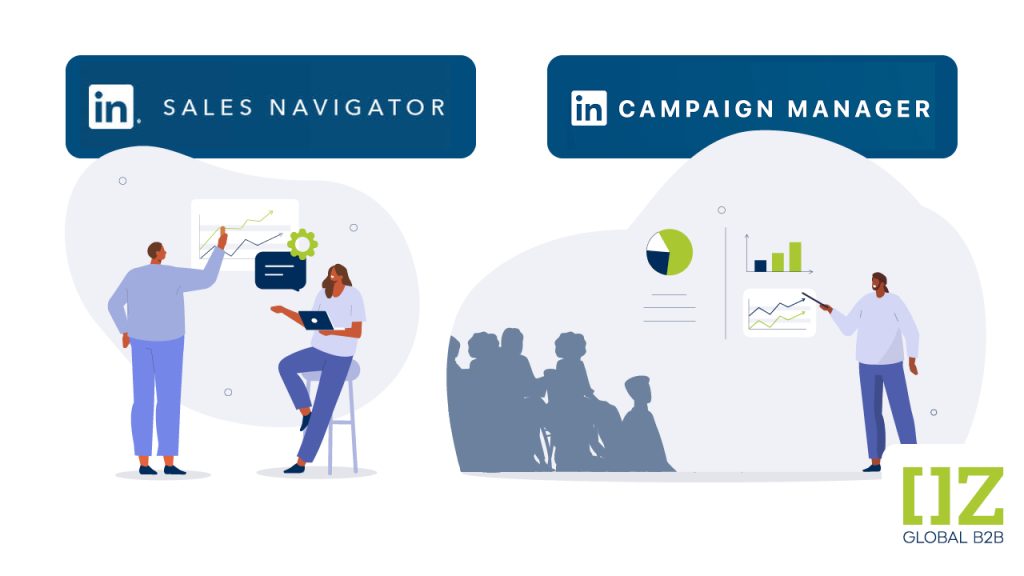 On LinkedIn, there are two primary types of users. The first group is known as "active users" and they exhibit a high level of engagement on the platform, such as performing searches, interacting with content, and sharing posts. These users also typically stay on top of their inbox and respond to relevant messages. These active users can be effectively targeted through an awareness campaign, followed by account-based marketing efforts.
The second main group of LinkedIn users are referred to as "basic users." These users tend to have a more limited level of activity on the platform, mostly just scrolling through their feed. They are less likely to respond to private messages. These basic users can be targeted through professional lead generation campaigns that will catch their attention while they are scrolling through their feed, with the use of an appealing message and creative content.
It is important to note that there are other types of users who fall somewhere between active and basic user, and by combining efforts of ABM with lead generation it will help in effectively reaching out to all types of users, with the right format and message.
In conclusion, account-based marketing and lead generation are both powerful strategies for generating revenue and boosting ROI. While they have their own unique benefits, it's important to understand how they can be used together to achieve optimal results. By using a targeted ABM approach in conjunction with a broad-based demand generation campaign, marketers can achieve their pipeline and revenue goals by capturing the attention of the right accounts and signing up new customers.
For more info and questions contact us.
On LinkedIn, there are two primary types of users. The first group is known as "active users" and they exhibit a high level of engagement on the platform, such as performing searches, interacting with content, and sharing posts. These users also typically stay on top of their inbox and respond to relevant messages. These active users can be effectively targeted through an awareness campaign, followed by account-based marketing efforts.
The second main group of LinkedIn users are referred to as "basic users." These users tend to have a more limited level of activity on the platform, mostly just scrolling through their feed. They are less likely to respond to private messages. These basic users can be targeted through professional lead generation campaigns that will catch their attention while they are scrolling through their feed, with the use of an appealing message and creative content.
It is important to note that there are other types of users who fall somewhere between active and basic user, and by combining efforts of ABM with lead generation it will help in effectively reaching out to all types of users, with the right format and message.
In conclusion, account-based marketing and lead generation are both powerful strategies for generating revenue and boosting ROI. While they have their own unique benefits, it's important to understand how they can be used together to achieve optimal results. By using a targeted ABM approach in conjunction with a broad-based demand generation campaign, marketers can achieve their pipeline and revenue goals by capturing the attention of the right accounts and signing up new customers.
For more info and questions contact us.
 While ABM and demand generation may seem like competing strategies, they can actually be used together to achieve optimal results. For example, demand generation can be used to create awareness and interest in a product or service, while ABM can be used to generate qualified leads and sign-up new customers.
This marketing tactic, can start with a broad-based demand generation campaign to create awareness, which will help to identify targeted leads or target market segments, which can then be used to inform a more targeted ABM campaign. An ABM activity can be used to reach out to specific named accounts with personalized content. These combined activities allow marketers to use both strategies to accelerate the buyer's journey and assist with selling.
It's also important to note that while ABM and demand generation are both outbound marketing strategies, inbound demand generation is also possible. By using inbound marketing tactics such as content marketing, SEO and other digital marketing strategies, you can drive leads and customers to your website and then use ABM to engage with them.
While ABM and demand generation may seem like competing strategies, they can actually be used together to achieve optimal results. For example, demand generation can be used to create awareness and interest in a product or service, while ABM can be used to generate qualified leads and sign-up new customers.
This marketing tactic, can start with a broad-based demand generation campaign to create awareness, which will help to identify targeted leads or target market segments, which can then be used to inform a more targeted ABM campaign. An ABM activity can be used to reach out to specific named accounts with personalized content. These combined activities allow marketers to use both strategies to accelerate the buyer's journey and assist with selling.
It's also important to note that while ABM and demand generation are both outbound marketing strategies, inbound demand generation is also possible. By using inbound marketing tactics such as content marketing, SEO and other digital marketing strategies, you can drive leads and customers to your website and then use ABM to engage with them.
 On LinkedIn, there are two primary types of users. The first group is known as "active users" and they exhibit a high level of engagement on the platform, such as performing searches, interacting with content, and sharing posts. These users also typically stay on top of their inbox and respond to relevant messages. These active users can be effectively targeted through an awareness campaign, followed by account-based marketing efforts.
The second main group of LinkedIn users are referred to as "basic users." These users tend to have a more limited level of activity on the platform, mostly just scrolling through their feed. They are less likely to respond to private messages. These basic users can be targeted through professional lead generation campaigns that will catch their attention while they are scrolling through their feed, with the use of an appealing message and creative content.
It is important to note that there are other types of users who fall somewhere between active and basic user, and by combining efforts of ABM with lead generation it will help in effectively reaching out to all types of users, with the right format and message.
In conclusion, account-based marketing and lead generation are both powerful strategies for generating revenue and boosting ROI. While they have their own unique benefits, it's important to understand how they can be used together to achieve optimal results. By using a targeted ABM approach in conjunction with a broad-based demand generation campaign, marketers can achieve their pipeline and revenue goals by capturing the attention of the right accounts and signing up new customers.
For more info and questions contact us.
On LinkedIn, there are two primary types of users. The first group is known as "active users" and they exhibit a high level of engagement on the platform, such as performing searches, interacting with content, and sharing posts. These users also typically stay on top of their inbox and respond to relevant messages. These active users can be effectively targeted through an awareness campaign, followed by account-based marketing efforts.
The second main group of LinkedIn users are referred to as "basic users." These users tend to have a more limited level of activity on the platform, mostly just scrolling through their feed. They are less likely to respond to private messages. These basic users can be targeted through professional lead generation campaigns that will catch their attention while they are scrolling through their feed, with the use of an appealing message and creative content.
It is important to note that there are other types of users who fall somewhere between active and basic user, and by combining efforts of ABM with lead generation it will help in effectively reaching out to all types of users, with the right format and message.
In conclusion, account-based marketing and lead generation are both powerful strategies for generating revenue and boosting ROI. While they have their own unique benefits, it's important to understand how they can be used together to achieve optimal results. By using a targeted ABM approach in conjunction with a broad-based demand generation campaign, marketers can achieve their pipeline and revenue goals by capturing the attention of the right accounts and signing up new customers.
For more info and questions contact us.
Is your website “Bing-ready”?
By
Orly Gilad
, 16/07/2023
This blog highlights essential points for SEO practitioners targeting Bing and Google. Topics include keyword research, social media integration, backlinks, local SEO, rich media content, and technical SEO. Stay updated with evolving algorithms for the best results. For more information, consult reputable SEO blogs and industry websites.
min read
With the rising popularity of AI-powered search and ChatGPT in particular, there's a respectively rise in Bing popularity as a search engine.
Are you ready for the new audience on your website?
Here are some general points to consider when comparing SEO for Bing and Google:
Here are some general points to consider when comparing SEO for Bing and Google:
- Keyword Research: While Bing and Google both consider keywords relevancy as an important factor for SEO, they may have different algorithms for how they interpret and rank keywords. It's important to research and optimize for search terms that are relevant to both Bing and Google search results. ➭ For example, After conducting keyword research, you may find that [your company solution] + USA are popular search terms on both Bing and Google. By optimizing your content for these keywords, you'll increase the chances of appearing in search results on both search engines.
- Social Media Integration: Bing tends to give more importance to social media integration and social signals, such as social media shares, likes, and comments, compared to Google. Incorporating social media strategies into your SEO efforts may be more beneficial for Bing rankings, so be sure to promote your content on social media platforms like LinkedIn, Twitter, and Facebook, encouraging shares, likes, and comments to improve Bing rankings.
- Backlinks: Both Bing and Google consider backlinks as an important ranking factor, but they may have different algorithms for evaluating the quality and relevance of backlinks. It's important to understand the differences and optimize your backlink strategy accordingly. ➭Request backlinks from authoritative industry websites or thought leaders to enhance your website's credibility and rankings on both Bing and Google.
- Local SEO: Bing tends to place more emphasis on local search results compared to Google. Optimizing your website for local SEO, by including location-specific keywords like "top Global B2B agencies in [Israel]" ;) will help optimize your local listing, and getting local citations, will be beneficial for both Bing and GMB rankings.
- Rich Media Content: Bing tends to place more importance on rich media content, such as images and videos, compared to Google. Including relevant images and videos with proper optimization may help improve your rankings on Bing.
- Technical SEO: Both Bing and Google consider technical SEO factors, such as website speed, mobile-friendliness, and crawlability. Optimizing your website's technical aspects according to the guidelines of both search engines can help improve your SEO performance on both Bing and Google.
➭ To find the technical guidelines for both Bing and Google, you can refer to the official documentation and resources provided by each search engine:
Additionally, both Bing and Google offer webmaster tools that provide insights into your website's performance, indexing status, and potential issues. These tools can help you optimize your website according to the search engine guidelines, improving your overall SEO performance.
- Bing Webmaster Tools: https://www.bing.com/webmasters/
- Google Search Console: https://search.google.com/search-console
Consumerize the Customer Journey
By
Nirit Elyovich, MBA
, 25/01/2022
Early in my career, a wise woman said customers pay my salary, not owners. It's vital for marketers to consider future customers' needs.
min read
When I just started my career, an intelligent woman told me that only when I understand that the customers of the company pay my salary and not the company owners, will I be able to call myself a marketer. So when you think about the future of marketing, you need to first consider what kind of customers we will meet.
Let’s talk about how you “consumerize” the customer journey; how you look at the B2B (Business to Business) customer a bit like a consumer.
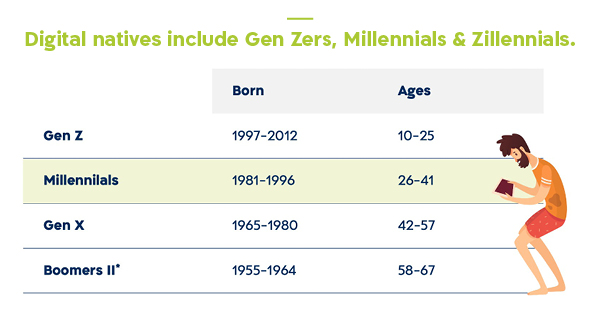 The millennials, also known as Generation Y, were born after 1980. They are now in their 30’s. Generation Z, as you can see in the table, is still young, but we will soon see them influencing our businesses. Since technology is changing very quickly, a sub-generation was born between the Millennials and Generation Z. Zillennials were born between ‘93-‘98 and were influenced by more advanced technology than the Millennials.
For their entire lives, digital natives have been surrounded by technology, social media, mobile devices, computers, and the internet. They speak this digital language as their mother tongue. They did not learn this language in their 20’s, 30’s, or later. They do not have an accent, so to speak.
The millennials, also known as Generation Y, were born after 1980. They are now in their 30’s. Generation Z, as you can see in the table, is still young, but we will soon see them influencing our businesses. Since technology is changing very quickly, a sub-generation was born between the Millennials and Generation Z. Zillennials were born between ‘93-‘98 and were influenced by more advanced technology than the Millennials.
For their entire lives, digital natives have been surrounded by technology, social media, mobile devices, computers, and the internet. They speak this digital language as their mother tongue. They did not learn this language in their 20’s, 30’s, or later. They do not have an accent, so to speak.
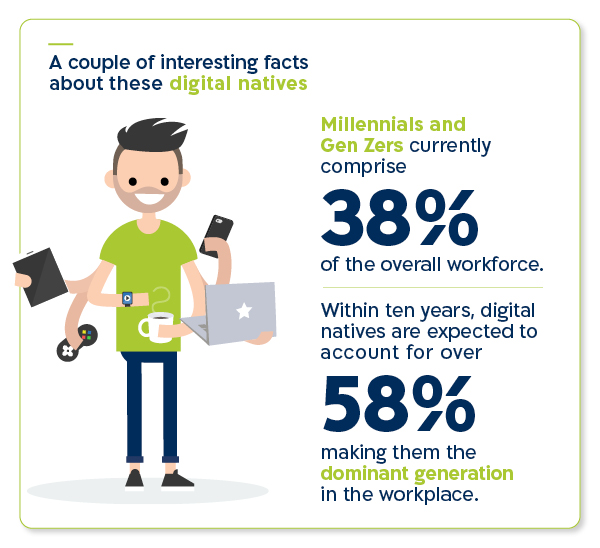
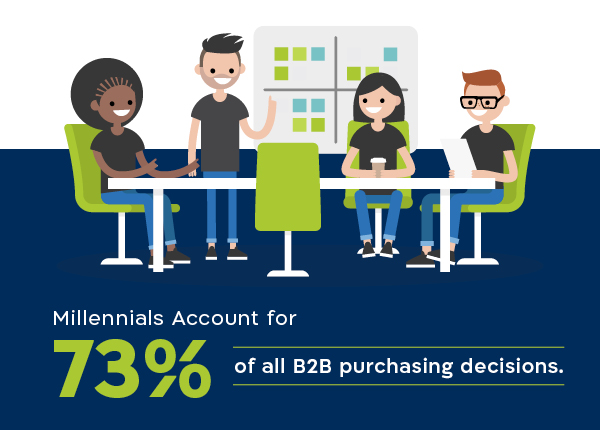 This impressive figure tells the whole story: More and more millennials and gen zers are entering the B2B decision journey, some as technological or professional influencers and others as decision-makers. It is important to note that among the people involved in decision-making, you usually meet several generations.
A few months ago, we at Oz Global B2B did a project for the American agricultural market. The intergenerational integration in the decision-making process that arose there was very prominent.
This impressive figure tells the whole story: More and more millennials and gen zers are entering the B2B decision journey, some as technological or professional influencers and others as decision-makers. It is important to note that among the people involved in decision-making, you usually meet several generations.
A few months ago, we at Oz Global B2B did a project for the American agricultural market. The intergenerational integration in the decision-making process that arose there was very prominent.
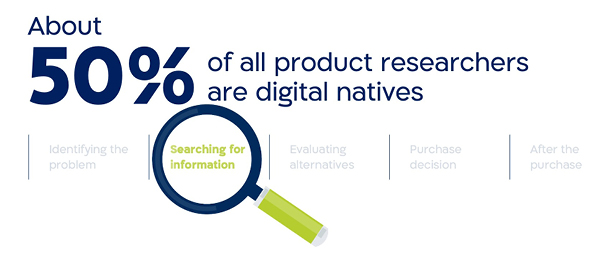 By the time the customer recognizes that he has a problem, we are, in most cases, not there. Identification is an internal stage from which someone is appointed to start researching information to find options for a solution.
50% of those who conduct the research and seek alternatives regarding a product or service, may not take an "official" part in decision-making but are the ones who put the relevant suppliers in the decision-making funnel. They are the ones who build the long list. They are the ones who decide whether or not you will be included in the “consideration group,” which is of critical importance.
By the time the customer recognizes that he has a problem, we are, in most cases, not there. Identification is an internal stage from which someone is appointed to start researching information to find options for a solution.
50% of those who conduct the research and seek alternatives regarding a product or service, may not take an "official" part in decision-making but are the ones who put the relevant suppliers in the decision-making funnel. They are the ones who build the long list. They are the ones who decide whether or not you will be included in the “consideration group,” which is of critical importance.
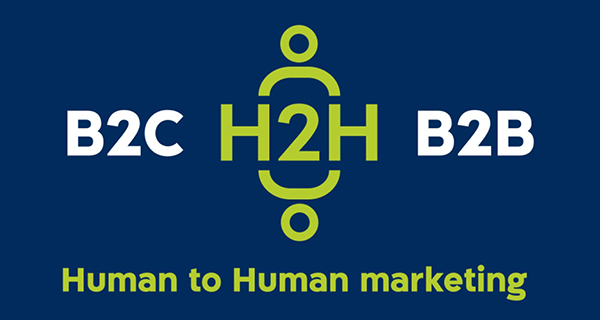
The new B2B customer is a digital native
Our childhood determines our future behaviors as adults, the people we become, and the decision-makers we grow up to be. It is also true of the technological environment in which we were raised. The millennials, also known as Generation Y, were born after 1980. They are now in their 30’s. Generation Z, as you can see in the table, is still young, but we will soon see them influencing our businesses. Since technology is changing very quickly, a sub-generation was born between the Millennials and Generation Z. Zillennials were born between ‘93-‘98 and were influenced by more advanced technology than the Millennials.
For their entire lives, digital natives have been surrounded by technology, social media, mobile devices, computers, and the internet. They speak this digital language as their mother tongue. They did not learn this language in their 20’s, 30’s, or later. They do not have an accent, so to speak.
The millennials, also known as Generation Y, were born after 1980. They are now in their 30’s. Generation Z, as you can see in the table, is still young, but we will soon see them influencing our businesses. Since technology is changing very quickly, a sub-generation was born between the Millennials and Generation Z. Zillennials were born between ‘93-‘98 and were influenced by more advanced technology than the Millennials.
For their entire lives, digital natives have been surrounded by technology, social media, mobile devices, computers, and the internet. They speak this digital language as their mother tongue. They did not learn this language in their 20’s, 30’s, or later. They do not have an accent, so to speak.

 This impressive figure tells the whole story: More and more millennials and gen zers are entering the B2B decision journey, some as technological or professional influencers and others as decision-makers. It is important to note that among the people involved in decision-making, you usually meet several generations.
A few months ago, we at Oz Global B2B did a project for the American agricultural market. The intergenerational integration in the decision-making process that arose there was very prominent.
This impressive figure tells the whole story: More and more millennials and gen zers are entering the B2B decision journey, some as technological or professional influencers and others as decision-makers. It is important to note that among the people involved in decision-making, you usually meet several generations.
A few months ago, we at Oz Global B2B did a project for the American agricultural market. The intergenerational integration in the decision-making process that arose there was very prominent.
-
- A family business where the younger generation initiates a decision, and the founding generation approves it. Sometimes the founder initiates the decision but immediately passes it on to the younger generation to check online what the options are.
- A senior manager at a big business closes a deal, but the people in the field - professionals or salespeople - do not “speak” the same language. This will greatly affect the next purchase.
The Millennials and Gen Zers highly influence who will enter the decision funnel
About 50% of all product searches on the web are conducted by digital natives. The customer journey is long, complex, and involves many stakeholders. By the time the customer recognizes that he has a problem, we are, in most cases, not there. Identification is an internal stage from which someone is appointed to start researching information to find options for a solution.
50% of those who conduct the research and seek alternatives regarding a product or service, may not take an "official" part in decision-making but are the ones who put the relevant suppliers in the decision-making funnel. They are the ones who build the long list. They are the ones who decide whether or not you will be included in the “consideration group,” which is of critical importance.
By the time the customer recognizes that he has a problem, we are, in most cases, not there. Identification is an internal stage from which someone is appointed to start researching information to find options for a solution.
50% of those who conduct the research and seek alternatives regarding a product or service, may not take an "official" part in decision-making but are the ones who put the relevant suppliers in the decision-making funnel. They are the ones who build the long list. They are the ones who decide whether or not you will be included in the “consideration group,” which is of critical importance.
Two tips to gain the trust of digital natives:
1. Be authentic!
The generation that grew up on social networks, fake news, and unfounded marketing does not believe in marketing messages and does not believe in unproven statements. They have developed a hypersensitivity to online messages - they suffer from a blatant lack of trust in what is being said online. They continue to consume information online, but with a very large firewall. The bright side of it is that digital natives recognize authenticity when they see it..So what does authentic marketing look like?
-
- Get your executives to use social media Customers want to know the people behind the executives or the company representatives that they are in contact with.Make sure your site reveals who you are beyond your formal title. What topics do you choose to share? Who are your friends, what groups do you belong to, and to whom do you respond to?LinkedIn is not everything. Feel free to diversify to other social networks - Facebook, Instagram, Twitter, and even Tik Tok.
- Share user-generated content from real people Show real things, with real customers behind them. If you trust your product, let it tell your story.
- Go live on social media platforms Talk without filters. To digital natives this sounds obvious, to digital immigrants, it is less trivial. At first, the digital immigrants posted posts after editing them numerous times. Then they agreed to post an edited video. The transition to live video is scarier, but this is exactly the meaning of authenticity.
- Promote employee advocacy Empower your employees to share smart, quality content with their own social networks. On average, employee networks have 10x more connections than a company has followers. Plus, according to the Edelman Trust Barometer, people are 3x more likely to trust company information shared by an employee than that shared by a CEO.
2. Consumerize!
This word does not exist in the dictionary yet but already stars in the literature that follows trends in the B2B world. As Mona Akmal, Falkon CEO and Cofounder, once said, “As work and life flexibly intertwine, so must our approach to reaching our target users.” Gone are the days when the customer was a business person between 9-17 and a consumer on evenings and weekends. Studies show that the business customer is very much influenced by his consumer experience and expects to have a similar experience in business purchases. The customer experience touches on all stages of the journey - collecting information, placing an order, contacting the company up to paying.- More than 80% of B2B customers stated that they will look for a new supplier if their expectations in terms of customer service and user experience are not fulfilled.
- According to McKinsey & Co, B2B brands score below 50% on customer experience index ratings on average, compared to 65 to 85% for typical B2C brands.
- Gartner illustrates that 77% of B2B buyers report that their last purchase was very difficult or complex.
To sum up…
- The digital natives are digital animals. They were born into it, and it is their playground. It requires us to be present and comfortable in the digital space. Allow them to find us easily and learn about us in a convenient way that interests them. Allow them to easily consult, purchase and pay online.
- Life in the digital arena has taught them to be suspicious, not to believe everything they are told. They have developed the skills and expertise to recognize fake news when they see it. This requires us to be authentic in interactions with them, without filters and edits.
- Remember, before they are decision-makers, customers, or partners, they are first and foremost human beings. Their personal lives have seeped into their business life and it is very difficult for them to separate the two. So, we have no choice but to "consumerize" the way we treat them.

10, 9, 8…. And counting down marketing trends for 2018
By
Orit Oz
, 18/01/2018
The New Year is here and we put together a countdown of marketing trends that will affect B2B brands in 2018!
min read
The New Year is officially here and we decided to put together a countdown of marketing trends that will affect B2B brands in 2018!
Here goes…..
 The trend for visualization through video, images and infographics will get stronger. In fact, predictions indicate that by 2019, video will account for 80% of consumer internet traffic. And, according to Facebook, live is even better and live video gets 3x more views and is expected to dramatically increase in 2017. B2B brands can use live videos in lots of different ways, including at events to give followers a behind-the-scenes look, host interviews with key influencers, and launch promotions.
The trend for visualization through video, images and infographics will get stronger. In fact, predictions indicate that by 2019, video will account for 80% of consumer internet traffic. And, according to Facebook, live is even better and live video gets 3x more views and is expected to dramatically increase in 2017. B2B brands can use live videos in lots of different ways, including at events to give followers a behind-the-scenes look, host interviews with key influencers, and launch promotions.
 Big data’s been a big trend for many years now, but it’s become more accessible because of machine learning and AI. As more and more platforms and marketing methods start incorporating big data, the use of big data is becoming an essential part of marketing and understanding what the consumer wants and when is worth its weight in gold.
Big data’s been a big trend for many years now, but it’s become more accessible because of machine learning and AI. As more and more platforms and marketing methods start incorporating big data, the use of big data is becoming an essential part of marketing and understanding what the consumer wants and when is worth its weight in gold.
 Transparency and trust have become a major component of the customer’s decision-making process as customers’ become less and less tolerant towards fake news and reviews, or in other words, exaggerated marketing. Brands should invest in community management to keep the online community engaged, informed and happy; and can use technology advances such as virtual reality (VR) and augmented reality (AR) to connect with users on a deeper, more emotional level.
Transparency and trust have become a major component of the customer’s decision-making process as customers’ become less and less tolerant towards fake news and reviews, or in other words, exaggerated marketing. Brands should invest in community management to keep the online community engaged, informed and happy; and can use technology advances such as virtual reality (VR) and augmented reality (AR) to connect with users on a deeper, more emotional level.
 There is no arguing with the fact that content is still king. However, there is a need to deal with the challenge of oversaturation. Now that most brands have some sort of content strategy and social media networks are full of content, the focus needs to shift slightly. Rather than fighting for more visibility, marketers will need to think out of the box and stand out in space that is already taken. This is where influencers come into the picture. By leveraging the networks of influencers who already have a “captive” audience, marketers can increase their online influence and start to reduce the volume of content produced, or in other words, go for quality and not quantity.
There is no arguing with the fact that content is still king. However, there is a need to deal with the challenge of oversaturation. Now that most brands have some sort of content strategy and social media networks are full of content, the focus needs to shift slightly. Rather than fighting for more visibility, marketers will need to think out of the box and stand out in space that is already taken. This is where influencers come into the picture. By leveraging the networks of influencers who already have a “captive” audience, marketers can increase their online influence and start to reduce the volume of content produced, or in other words, go for quality and not quantity.
 Born between 1995 and 2010, this consumer group marks a substantial shift that will affect all brands. These digital natives are different from millennials and they will have increased buying power in the near future. Keep an eye out on key platforms such as Snapchat and Instagram when targeting this young and highly dynamic demographic.
Born between 1995 and 2010, this consumer group marks a substantial shift that will affect all brands. These digital natives are different from millennials and they will have increased buying power in the near future. Keep an eye out on key platforms such as Snapchat and Instagram when targeting this young and highly dynamic demographic.
 We cannot emphasize this one enough. Consumers are spending most of their time on their mobile phones. In fact, in 2018, mobile video consumption is expected to grow by 25% and ad spending on mobile video will reach 18 billion dollars next year, surpassing desktop. Even Google has even given priority to pages that are AMP optimized (Accelerated Mobile Pages). So the bottom line is that if you haven’t yet done so, you need to start optimizing your marketing strategies, websites and ads for mobile.
We cannot emphasize this one enough. Consumers are spending most of their time on their mobile phones. In fact, in 2018, mobile video consumption is expected to grow by 25% and ad spending on mobile video will reach 18 billion dollars next year, surpassing desktop. Even Google has even given priority to pages that are AMP optimized (Accelerated Mobile Pages). So the bottom line is that if you haven’t yet done so, you need to start optimizing your marketing strategies, websites and ads for mobile.
 While it’s still important to know how many people visited your site and from where, at the end of the day it’s all about sales. For this reason, it’s important to track conversions and revenue, in other words, who buys and at what stage of the buyer’s journey. In this way, it becomes easier to track your return of investment on digital marketing.
While it’s still important to know how many people visited your site and from where, at the end of the day it’s all about sales. For this reason, it’s important to track conversions and revenue, in other words, who buys and at what stage of the buyer’s journey. In this way, it becomes easier to track your return of investment on digital marketing.
 The digital age brings with it the need to take multiple aspects including data privacy into account. In May 2018, the General Data Protection Regulation (GDPR) will take affect with the aim of improving protection for EU citizens and adapting privacy and data laws to the digital age. This will require marketers to think and act very differently as it will affecter multiple factors in a marketer’s focus, some of which require organizations to start preparing immediately.
The digital age brings with it the need to take multiple aspects including data privacy into account. In May 2018, the General Data Protection Regulation (GDPR) will take affect with the aim of improving protection for EU citizens and adapting privacy and data laws to the digital age. This will require marketers to think and act very differently as it will affecter multiple factors in a marketer’s focus, some of which require organizations to start preparing immediately.
 Native advertising is expected to drive more than 74 percent of all add revenue by 2021. Because of their more natural placement and format, these ads usually get more exposure and engagement than traditional banner ads. However, these ads need to be written according to the preferences of those seeing the ads, and they should also be linked to “smart content” that is adapted to audiences based on NI, cookies and an in-depth understanding of target audiences.
Native advertising is expected to drive more than 74 percent of all add revenue by 2021. Because of their more natural placement and format, these ads usually get more exposure and engagement than traditional banner ads. However, these ads need to be written according to the preferences of those seeing the ads, and they should also be linked to “smart content” that is adapted to audiences based on NI, cookies and an in-depth understanding of target audiences.
 Even though we already mentioned this one in a previous point, we think it deserves to be repeated for emphasis. As more and more people experience the FOMO (Fear of Missing Out) effect, marketers need to create unique and original content that makes potential customers feel like they’re the first to know. For example, content that involves a “behind-the-scenes look”, an exclusive with an influencer, or a sneak preview of upcoming projects and product launches can be used to really create a buzz and get potential consumers to engage “before” anyone else does.
Even though we already mentioned this one in a previous point, we think it deserves to be repeated for emphasis. As more and more people experience the FOMO (Fear of Missing Out) effect, marketers need to create unique and original content that makes potential customers feel like they’re the first to know. For example, content that involves a “behind-the-scenes look”, an exclusive with an influencer, or a sneak preview of upcoming projects and product launches can be used to really create a buzz and get potential consumers to engage “before” anyone else does.
10 – Visual content
 The trend for visualization through video, images and infographics will get stronger. In fact, predictions indicate that by 2019, video will account for 80% of consumer internet traffic. And, according to Facebook, live is even better and live video gets 3x more views and is expected to dramatically increase in 2017. B2B brands can use live videos in lots of different ways, including at events to give followers a behind-the-scenes look, host interviews with key influencers, and launch promotions.
The trend for visualization through video, images and infographics will get stronger. In fact, predictions indicate that by 2019, video will account for 80% of consumer internet traffic. And, according to Facebook, live is even better and live video gets 3x more views and is expected to dramatically increase in 2017. B2B brands can use live videos in lots of different ways, including at events to give followers a behind-the-scenes look, host interviews with key influencers, and launch promotions.
9 – Big (big) data
 Big data’s been a big trend for many years now, but it’s become more accessible because of machine learning and AI. As more and more platforms and marketing methods start incorporating big data, the use of big data is becoming an essential part of marketing and understanding what the consumer wants and when is worth its weight in gold.
Big data’s been a big trend for many years now, but it’s become more accessible because of machine learning and AI. As more and more platforms and marketing methods start incorporating big data, the use of big data is becoming an essential part of marketing and understanding what the consumer wants and when is worth its weight in gold.
8 – Authenticity
 Transparency and trust have become a major component of the customer’s decision-making process as customers’ become less and less tolerant towards fake news and reviews, or in other words, exaggerated marketing. Brands should invest in community management to keep the online community engaged, informed and happy; and can use technology advances such as virtual reality (VR) and augmented reality (AR) to connect with users on a deeper, more emotional level.
Transparency and trust have become a major component of the customer’s decision-making process as customers’ become less and less tolerant towards fake news and reviews, or in other words, exaggerated marketing. Brands should invest in community management to keep the online community engaged, informed and happy; and can use technology advances such as virtual reality (VR) and augmented reality (AR) to connect with users on a deeper, more emotional level.
7 – Content and influencer networks
 There is no arguing with the fact that content is still king. However, there is a need to deal with the challenge of oversaturation. Now that most brands have some sort of content strategy and social media networks are full of content, the focus needs to shift slightly. Rather than fighting for more visibility, marketers will need to think out of the box and stand out in space that is already taken. This is where influencers come into the picture. By leveraging the networks of influencers who already have a “captive” audience, marketers can increase their online influence and start to reduce the volume of content produced, or in other words, go for quality and not quantity.
There is no arguing with the fact that content is still king. However, there is a need to deal with the challenge of oversaturation. Now that most brands have some sort of content strategy and social media networks are full of content, the focus needs to shift slightly. Rather than fighting for more visibility, marketers will need to think out of the box and stand out in space that is already taken. This is where influencers come into the picture. By leveraging the networks of influencers who already have a “captive” audience, marketers can increase their online influence and start to reduce the volume of content produced, or in other words, go for quality and not quantity.
6 – Shift of focus from millennials to Generation Z
 Born between 1995 and 2010, this consumer group marks a substantial shift that will affect all brands. These digital natives are different from millennials and they will have increased buying power in the near future. Keep an eye out on key platforms such as Snapchat and Instagram when targeting this young and highly dynamic demographic.
Born between 1995 and 2010, this consumer group marks a substantial shift that will affect all brands. These digital natives are different from millennials and they will have increased buying power in the near future. Keep an eye out on key platforms such as Snapchat and Instagram when targeting this young and highly dynamic demographic.
5 – Mobile, mobile, mobile
 We cannot emphasize this one enough. Consumers are spending most of their time on their mobile phones. In fact, in 2018, mobile video consumption is expected to grow by 25% and ad spending on mobile video will reach 18 billion dollars next year, surpassing desktop. Even Google has even given priority to pages that are AMP optimized (Accelerated Mobile Pages). So the bottom line is that if you haven’t yet done so, you need to start optimizing your marketing strategies, websites and ads for mobile.
We cannot emphasize this one enough. Consumers are spending most of their time on their mobile phones. In fact, in 2018, mobile video consumption is expected to grow by 25% and ad spending on mobile video will reach 18 billion dollars next year, surpassing desktop. Even Google has even given priority to pages that are AMP optimized (Accelerated Mobile Pages). So the bottom line is that if you haven’t yet done so, you need to start optimizing your marketing strategies, websites and ads for mobile.
4 – Shift in KPIs
 While it’s still important to know how many people visited your site and from where, at the end of the day it’s all about sales. For this reason, it’s important to track conversions and revenue, in other words, who buys and at what stage of the buyer’s journey. In this way, it becomes easier to track your return of investment on digital marketing.
While it’s still important to know how many people visited your site and from where, at the end of the day it’s all about sales. For this reason, it’s important to track conversions and revenue, in other words, who buys and at what stage of the buyer’s journey. In this way, it becomes easier to track your return of investment on digital marketing.
3 – Data protection
 The digital age brings with it the need to take multiple aspects including data privacy into account. In May 2018, the General Data Protection Regulation (GDPR) will take affect with the aim of improving protection for EU citizens and adapting privacy and data laws to the digital age. This will require marketers to think and act very differently as it will affecter multiple factors in a marketer’s focus, some of which require organizations to start preparing immediately.
The digital age brings with it the need to take multiple aspects including data privacy into account. In May 2018, the General Data Protection Regulation (GDPR) will take affect with the aim of improving protection for EU citizens and adapting privacy and data laws to the digital age. This will require marketers to think and act very differently as it will affecter multiple factors in a marketer’s focus, some of which require organizations to start preparing immediately.
2 – Native ads and smart content
 Native advertising is expected to drive more than 74 percent of all add revenue by 2021. Because of their more natural placement and format, these ads usually get more exposure and engagement than traditional banner ads. However, these ads need to be written according to the preferences of those seeing the ads, and they should also be linked to “smart content” that is adapted to audiences based on NI, cookies and an in-depth understanding of target audiences.
Native advertising is expected to drive more than 74 percent of all add revenue by 2021. Because of their more natural placement and format, these ads usually get more exposure and engagement than traditional banner ads. However, these ads need to be written according to the preferences of those seeing the ads, and they should also be linked to “smart content” that is adapted to audiences based on NI, cookies and an in-depth understanding of target audiences.
1 – Take advantage of the FOMO effect
 Even though we already mentioned this one in a previous point, we think it deserves to be repeated for emphasis. As more and more people experience the FOMO (Fear of Missing Out) effect, marketers need to create unique and original content that makes potential customers feel like they’re the first to know. For example, content that involves a “behind-the-scenes look”, an exclusive with an influencer, or a sneak preview of upcoming projects and product launches can be used to really create a buzz and get potential consumers to engage “before” anyone else does.
Even though we already mentioned this one in a previous point, we think it deserves to be repeated for emphasis. As more and more people experience the FOMO (Fear of Missing Out) effect, marketers need to create unique and original content that makes potential customers feel like they’re the first to know. For example, content that involves a “behind-the-scenes look”, an exclusive with an influencer, or a sneak preview of upcoming projects and product launches can be used to really create a buzz and get potential consumers to engage “before” anyone else does.
Moo-ving it up a notch with user experience
By
Miri Peled
, 10/10/2017
To encourage Afimilk’s dealers to make more purchases online and to give them access to marketing materials, OZ designed an intuitive online partner portal.
min read
Afimilk case study: partner portal
In the world of B2B, it’s really important to nurture partner relationships and find ways to make it easier for our partners and distributors to satisfy the needs of their (and our) end customers. In this manner, you can create a win-win situation where both your customers (distributors) are happy and their customers (end users) are happy with your brand. Recently, as part of our ongoing services for Afimilk – a global leader in advanced dairy management technology solutions – we created a unique and creative solution for its partners. With the goal of encouraging Afimilk’s dealers to make more purchases online and give them easy access to marketing materials, we designed an integrated and intuitive online partner portal. This portal provides end-to-end marketing and sales support, and an easy-to-use online ordering system. It includes three valuable tools that are also integrated with Afimilk’s ERP system:- Knowledge center – with marketing resources including brochures, presentations, and supporting materials to help dealers promote Afimilk solutions.
- Configurator wizard – builds price quotations tailored to customer requirements while promoting Afimilk’s preferred solutions.
- Market gate – intuitive online ordering system tailored for Afimilk partners to encourage online ordering.
Moving to a business-to-business-to-user mindset (B2B2U©)
By
Dina Gidron
, 10/09/2017
Communicate with both intermediary customers and patient-consumers in this new age of healthcare by transitioning to a Business-to-Business-to User model.
min read
We're entering a new age of healthcare, the "Social Health" era, where the focus has shifted to informed patient-consumers. With ever-increasing access to information, our patient-consumers are now empowered more than ever to make choices for themselves by researching and even shopping online for everything from health plans and doctors to medical equipment and insurance policies.
As the digital revolution disrupts the way we've traditionally done business in the medical and healthcare space, there is a need to communicate with both intermediary customers (payers) and patient-consumers. This means transitioning from a more traditional Business-to-Business (B2B) model into a newer Business-to-Business-to User (B2B2U©) model. Because at the end of the day, even if you aren't selling directly to your patient-consumers, you still need to engage with them to understand their challenges, meet their needs and ultimately create bottom-up demand for your brand.
This move to a B2B2U model starts with identifying your patient-consumers and gathering information about their challenges. Once you’ve identified them, you can then open up direct channels of communication with them, offer them valuable information and also show them how your services or products offer real value and help solve their challenges.
One of the challenges in this approach is making sure that you don’t compromise your relationship with your paying customers when you start communicating directly with your patient-consumers. This can be solved by involving them in the process and maintaining full transparency about your goal, that is, to raise brand awareness and drive demand (and not to sell directly to patient-consumers).
Interested in learning more about how you can create a win-win situation for both you and your intermediary customers?
It’s all about the people and building relationships
By
Miri Peled
, 09/08/2017
We worked together to develop a new visual identity that stands out in the global market and is also centered around Trendlines’ two foundational principles.
min read
Trendlines Group case study: rebranding and visual identity
As our clients grow and expand their global reach, we are committed to helping them tell the story that sets them apart while staying true to their authentic corporate values.
 In the case of Trendlines Group – an innovation commercialization company that invents, invest in, and incubates innovation-based technology – global expansion and going public on the Singapore stock exchange were the main catalysts for looking to OZ for rebranding.
As we've been partnering with Trendlines for the last 20 years, it was natural that the company turned to us for support at this significant point of growth.
Against the backdrop of our long-term relationship, we worked together to develop a new visual identity that stands out in today's global market and is also centered around Trendlines’ two foundational principles:
In the case of Trendlines Group – an innovation commercialization company that invents, invest in, and incubates innovation-based technology – global expansion and going public on the Singapore stock exchange were the main catalysts for looking to OZ for rebranding.
As we've been partnering with Trendlines for the last 20 years, it was natural that the company turned to us for support at this significant point of growth.
Against the backdrop of our long-term relationship, we worked together to develop a new visual identity that stands out in today's global market and is also centered around Trendlines’ two foundational principles:
It’s about the people AND building relationships
Because Trendlines Group’s hands-on investment approach and commitment to improve the human condition through innovation are inseparable parts of the company's character, the refreshed visual identity rests strongly on these principles. The result – a new compelling brand and visual identity – was launched at Trendlines’ 7th Annual Trendlines Company Showcase attended by hundreds of biomedicine industry professionals from around the world, and sponsored by companies worldwide.Inbound for Medical & Healthcare Companies Event
By
Miri Peled
, 23/07/2017
We held an Inbound for Medical & Healthcare Companies event where industry experts shared multiple insights on marketing for medical and healthcare industries.
min read
On 21 June 2017, we held a successful Inbound for Medical & Healthcare Companies event for over 50 attendees.
At the event, industry experts shared the following insights on marketing for medical & healthcare companies:
- Matt Brown, HubSpot Specialist from Boston – US Trends in Healthcare Marketing
- Dina Gidron, VP Strategy at OZ – Opening New Channels of Communication
- Mickey Nave, Corporate Marketing Director at Lumenis – Medical marketing: generating leads that your sales team will love
- Bat-chen Grinberg, Founder of MC Forum – Digital tools that reduce your work overload
- The age of “Social Health”. The combination of healthcare reforms, the age of consumerism and mobile technology is creating the perfect climate for change in healthcare.
- We see YOU, we know YOU, we understand YOU, we want to help YOU. The digital revolution is transforming the way we do business as we shift from a Business-to-Business (B2B) to a Business-to-Business-to-User (B2B2U©).
- Patient-consumers are the center of the universe. As patient-consumers become the single most important factor in this new era, we need to open up direct channels of communication with them to understand their challenges, increase brand awareness and create bottom-up demand.
- Trends in medical and healthcare. Patient-consumers are avid researchers; marketers are targeting patient-consumers AND payers; digital channels are overtaking traditional marketing channels; and digital content is key to the decision process.
- Brands must recognize social health and deliver value across the full spectrum to drive leads, convert prospects to customers and keep them loyal.
- Inbound marketing and content marketing are well-suited to the medical and healthcare industry as it promotes targeted communication, trust-based decision-making, long-term relationships, and thought leadership and industry expertise.
Getting to know your patient-consumers
By
Orit Oz
, 13/07/2017
When I just started my career, an intelligent woman told me that only when I understand.
min read
Preparing for the age of “Social Health”
As healthcare reforms, the era of consumerism and mobile technology create the ideal climate for positive change in the medical and healthcare arena, we’re ushering in a new age – the “Social Health” era. As we transition into this new era, patient-consumers are becoming the single most important factor in the medical and healthcare eco-system; and as they research and shop online for medical services, products and insurance plans, the medical & healthcare industry increasingly resembles a retail industry. The impact of this shift on medical and healthcare providers is huge as it means they need to open up direct channels of communication with patient-consumers to understand their challenges and offer services and products with real value. Or in other words, there is a need to move from a Business-to-Business (B2B) to a Business-to-Business-to-User (B2B2U©) approach. As we enter this age of “Social Health”, brands need to recognize the need to deliver value across the full spectrum to drive leads, convert prospects to customers and keep them loyal.
As we enter this age of “Social Health”, brands need to recognize the need to deliver value across the full spectrum to drive leads, convert prospects to customers and keep them loyal.
What’s the difference between traditional and inbound marketing?
By
Miri Peled
, 29/06/2017
Inbound marketing focuses on attracting customers through valuable content, while traditional marketing is marketer-centric and uses more interruptive methods.
min read
It's time to attract your prospects instead of bombarding them.
Inbound marketing is a customer-centric approach that focuses on attracting customers to your business through content and interactions that are valuable, helpful, and trust-building.It’s all about using remarkable content to develop and nurture long-term relationships with your prospects so they ultimately build trust in your brand.
In comparison, traditional marketing, which is marketer-centric, uses more interruptive methods to vie for the attention of prospects.| Inbound | VS. | Outbound | |
| Definition | Inbound marketing uses customer-centric tactics to attract prospects, address their challenges and goals, and build trust in your business | Traditional marketing uses more interruptive methods to push products and services and get the attention of prospects | |
| Communication | Based on interactive communication that engages prospects and attracts them to you | Based on one-way, outward communication | |
| Tools/techniques | Educational content such as blogs, videos, eBooks, white papers, SEO, and case studies | Print and TV ads, banner ads, direct mail, cold calling, and mass email campaigns | |
| Goals | Offer prospects value through educational content and earn their trust | Drive sales through product-centric marketing |
Get your creative juices flowing with these great blog topic tips
By
Orit Oz
, 06/06/2017
Here are some tips to get your creative juices flowing to come up with some great blog topics.
min read
In one of our last blogs, we spoke about how content is the fuel behind inbound marketing.
The question now is where do you start and what do you focus on?
Let’s start with a quick recap of the recommended process for creating content for inbound:
- Consider the content’s purpose, format and topics.
- Create content that builds trust amongst your prospects.
- Get your content in front of the right people at the right time.
- Analyze & repeat. Determine what worked and what didn’t, and repeat your successes.
What is lead nurturing?
By
Orit Oz
, 24/05/2017
Lead nurturing is the process of engaging with contacts via automated workflows to build a relationship with them.
min read
Lead nurturing is the process of engaging with contacts via automated workflows to build a relationship with them. The end goal is to close more educated and qualified customers faster and to delight customers to become promoters of your brand. Because the reality is that not all leads are ready to talk to the sales team at the beginning of their interaction with your company. In fact, most aren't, and according to HubSpot, research shows that only 5-25% of visitors that come to your site are ready to close the deal.
This means that in order for inbound marketing to be effective, you need to engage with your leads along every stage of the buyer's journey until they are ready to do business with you.
Which is where lead nurturing comes in. As a key component of your B2B marketing strategy, lead nurturing utilizes automated email campaigns that are timely, offer valuable content, and address your prospects' specific interests to nurture them until they're sales ready.
And, because the emails are automated, it saves you a lot of work by qualifying leads and pushing them through the sales funnel quicker, meaning a higher return on investment. In fact, DemandGen Report found that nurtured leads increase sales opportunities by an average of 20% versus non-nurtured leads.
As you begin to develop your lead nurturing workflows, always remember these foundational principles:
Because the reality is that not all leads are ready to talk to the sales team at the beginning of their interaction with your company. In fact, most aren't, and according to HubSpot, research shows that only 5-25% of visitors that come to your site are ready to close the deal.
This means that in order for inbound marketing to be effective, you need to engage with your leads along every stage of the buyer's journey until they are ready to do business with you.
Which is where lead nurturing comes in. As a key component of your B2B marketing strategy, lead nurturing utilizes automated email campaigns that are timely, offer valuable content, and address your prospects' specific interests to nurture them until they're sales ready.
And, because the emails are automated, it saves you a lot of work by qualifying leads and pushing them through the sales funnel quicker, meaning a higher return on investment. In fact, DemandGen Report found that nurtured leads increase sales opportunities by an average of 20% versus non-nurtured leads.
As you begin to develop your lead nurturing workflows, always remember these foundational principles:
- Grow and nurture relationships
- Offer educational content
- Use hyper personalization
Inbound marketing in a nutshell
By
Orit Oz
, 16/05/2017
When I just started my career, an intelligent woman told me that only when I understand.
min read
Inbound marketing is a customer-centric approach that focuses on attracting customers to your business by offering valuable and informative content that speaks to theirs needs and builds trust in your business.
As opposed to more traditional, marketer-centric marketing, which uses interruptive methods such as emails, cold calling, and printed ads to get the attention of prospects, inbound marketing creates positive interactions that empower prospects with the information they need to make decisions for themselves.

Why inbound marketing?
We live in an age where people are bombarded with advertising wherever they turn, and for this reason, have become increasingly skeptical of standard interruptive marketing methods. In fact, Harvard Business Review reports that 90% of B2B buyers never respond to cold-marketing. For this reason, instead of competing for consumer attention, inbound uses the fact that prospects seek out the information they need on their own terms. By developing valuable and relevant content with the expectation to be found, potential customers will come to you, become new clients, and ultimately be delighted by their experience.How does inbound marketing work?
Inbound marketing is based on four phases: attract, convert, close, delight
ATTRACT
First, attract visitors to your website using tools such as blogging, website optimization, and, social media. Tools: blog, social media, keywords, pagesCONVERT
Once you have new visitors, you can convert some into leads by gathering their contact information, the currency of inbound marketing. To do this, it's important to offer them something valuable, usually in the form of additional information or useful content. Tools: calls-to-action, landing pages, forms, contactsCLOSE
Once you’ve converted some visitors into leads, you need to nurture their interest by providing them with relevant information. In this stage, tools like email and CRM are helpful in selling to the right leads at the right time. Tools: email, workflows, lead scoring, CRM integrationsDELIGHT
Once you close a sale with a customer, your relationship is just beginning. At this stage, you need to continue to delight and engage them so they become happy promoters of your brand. Tools: social media, smart calls-to-action, email, workflows Analysis is critical to making inbound marketing work. Every strategy and technique you use, and content you create, should be analyzed regularly to see if it's working, and adjusted as needed to make it better.Does inbound marketing work for B2B?
By
Orit Oz
, 16/05/2017
Does inbound marketing work for B2B businesses? Of course it does, because it doesn’t matter what you’re selling or to whom – your customer always comes first.
min read
Attracting customers with inbound marketing
Inbound marketing is a customer-centric approach that focuses on attracting customers to your business. Unlike traditional interruptive marketing that vies for attention through cold calls, purchased ads, and email blasts, inbound marketing responds to prospects’ needs and interests by offering them valuable content in the right place and at the right time. “By publishing the right content in the right place at the right time, your marketing becomes relevant and helpful to your customers, not interruptive.” - Hubspot Read more about inbound marketing here.So how does inbound marketing work for B2B?
It’s often assumed that inbound marketing is better suited for businesses that sell directly to consumers (B2C); and, in the recent “push” to “pull” marketing shift, it appears that B2C organizations have more easily adopted this new marketing model. In contrast, B2B or B2C organizations appear to be more skeptical and adopt the new approach with more caution. The main reason for this is that a lot of B2B and B2B2C organizations are still trying to figure out how inbound marketing can work for them; and they often question whether this new approach is even applicable to business customers.The answer is — of course — YES!
Because the truth is that it doesn’t matter what you’re selling or to whom, the majority of your prospects are usually partially through the buying cycle before they even consider talking to a salesperson. And that’s where the emphasis needs to be — ON YOUR PROSPECTS. In order for inbound marketing to work, you need to have an in-depth understanding of your value chain and your sales model. Once you have that, you can then create valuable content that attracts visitors to your business, converts them into prospects, engages them until they decide to purchase your product or service, and then delights them so they become promoters of your brand. In this manner, you can use inbound marketing to create a win-win situation where you get closer to both your distributors and your end users, and in the process, increase brand awareness to enhance end-user demand for your brand (even if you they are not buying directly from you). But here’s the thing – you need to be in it for the long haul. Inbound marketing takes time, effort, and patience. But it’s definitely worth the wait!Attracting the RIGHT customers to your B2B business
By
Orit Oz
, 16/05/2017
Inbound marketing for B2B is about attracting the right people to your business – those who become leads, then customers and ultimately promoters of your brand.
min read
Inbound marketing is not just about attracting people to your business; it's about attracting the right people to your business – those who will become leads, and then customers, and ultimately happy promoters of your brand.
 There are tools for every stage of the inbound marketing process, and the first phase — attract — is all about getting suitable prospects in the door. This is usually done by offering valuable content and using a variety of marketing techniques to ensure that B2B buyers find your business, including blogging, SEO, and social media — but for the moment, let’s leave that for another post.
Because before you start anything, in order to attract the right customers, you obviously need to know who your ideal customers actually are — right?
Understanding who your customers are and what they want
For the inbound customer-centric approach to work, you need to know who you're actually trying to reach. The best way to learn about your ideal customers, their interests, and their buying habits is to develop buyer personas, which are simply representations of your ideal customers. Buyer personas are based on three essential practices – research, identifying trends, and creating persona profile stories. This research and analysis allows you to uncover the mindset, goals, challenges, and motivations of your potential buyers.
Once you've determined who your ideal customers are, the next step is understanding the buyer’s journey — which is the active research process your potential prospects go through before making a purchase. This journey, which is usually divided into three stages – awareness, consideration, and decision--, helps you tailor your inbound marketing and content to create meaningful interactions with your ideal customers (buyer personas) at every stage of their process (buyer's journey).
There are tools for every stage of the inbound marketing process, and the first phase — attract — is all about getting suitable prospects in the door. This is usually done by offering valuable content and using a variety of marketing techniques to ensure that B2B buyers find your business, including blogging, SEO, and social media — but for the moment, let’s leave that for another post.
Because before you start anything, in order to attract the right customers, you obviously need to know who your ideal customers actually are — right?
Understanding who your customers are and what they want
For the inbound customer-centric approach to work, you need to know who you're actually trying to reach. The best way to learn about your ideal customers, their interests, and their buying habits is to develop buyer personas, which are simply representations of your ideal customers. Buyer personas are based on three essential practices – research, identifying trends, and creating persona profile stories. This research and analysis allows you to uncover the mindset, goals, challenges, and motivations of your potential buyers.
Once you've determined who your ideal customers are, the next step is understanding the buyer’s journey — which is the active research process your potential prospects go through before making a purchase. This journey, which is usually divided into three stages – awareness, consideration, and decision--, helps you tailor your inbound marketing and content to create meaningful interactions with your ideal customers (buyer personas) at every stage of their process (buyer's journey).
The power of content in inbound marketing
By
Orit Oz
, 16/05/2017
Content is the fuel behind inbound marketing – it carries the message your company wants to deliver to your customers at the right time and in the right place.
min read
Content is what sets you apart
It’s the fuel behind inbound marketing – it carries the message your company wants to deliver to your customers at the right time and in the right place. It’s what powers a successful inbound strategy by pulling people from one stage of the inbound methodology to another and addressing their challenges and questions.Content in B2B
Content marketing works for every type of business. In fact, according to a report put out by the Content Marketing Institute, 85% of B2B marketers identified the creation of quality and efficient content as being a leading factor for increased marketing success in 2016. Additionally, based on company metrics, 78% of these B2B marketers report an increase in audience engagement and 57% saw an increase in sales with use of content for their B2B marketing.The content process
Now that we've established the importance of content, where do you start and what should you focus on? The best way to optimize your content for your inbound marketing strategy is to follow a content process that involves 4 main steps:- Consider the content’s purpose, format and topics.
- Create content that builds trust amongst your prospects.
- Get your content in front of the right people at the right time.
- Analyze & repeat. Determine what worked and what didn’t, and repeat your successes.
Getting creative in B2B marketing
By
Miri Peled
, 15/05/2017
Yes, branding is vital to success. But what about lead generation, which is also crucial to business and requires creative methods to bring in qualified leads?
min read
We speak a lot about branding — adding value to B2B brands, building global brands, marketing in a digital world, employee branding, etc.
Yes, they are all absolutely vital to business growth and success.
But we often tend to speak less about or even ignore a less “sexy” component— lead generation.
Most people just hear the term and get overwhelmed, which is a major problem as despite the challenges involved, lead acquisition and tracking is a crucial part of any business.
And in a world where the heat is always on to win (or maintain) market share and stay ahead of the competition, traditional methods are no longer enough. More of the same just doesn’t cut it anymore and creativity is key!
In the case of Amiad Water Systems, a world leader in water treatment and filtration solutions, the marketing team decided to try something different to support and improve the sales process. This came after the company successfully underwent rebranding; and with a solid foundation in place, it was time to get the word out and translate all the efforts into revenue.
After getting the go ahead from the sales team and researching potential buyer personas, the team created Amiad FilterIT — a digital tool (app) to help end users understand which of the company’s solutions best suited their needs.
The idea was simple. The user would sign up and download the app, add the criteria, and receive information on the products that met these criteria. In addition to helping the end user and collecting highly-qualified leads, the Amiad FilterIT app could also be used to promote new and innovative products, push notifications to customers, track data and optimize products and services based on user behavior and needs.
Once the app was implemented in one specific market, Amiad used a digital campaign to promote it and as a result, the sales team received hundreds of qualified leads that could then be nurtured through direct communication.
Based on this success, Amiad is currently in the process of implementing the app in additional markets globally.
What’s all the fuss about Inbound marketing?
By
Orit Oz
, 15/05/2017
We’ve all heard the term Inbound marketing thrown around a lot lately. It’s become the latest catchphrase in a field that’s already packed with catchphrases.
min read
We’ve all heard the term Inbound marketing thrown around a lot lately. It’s become the latest catchphrase in a field that’s already packed with catchphrases.
But what does it actually mean and can it help B2B businesses grow?
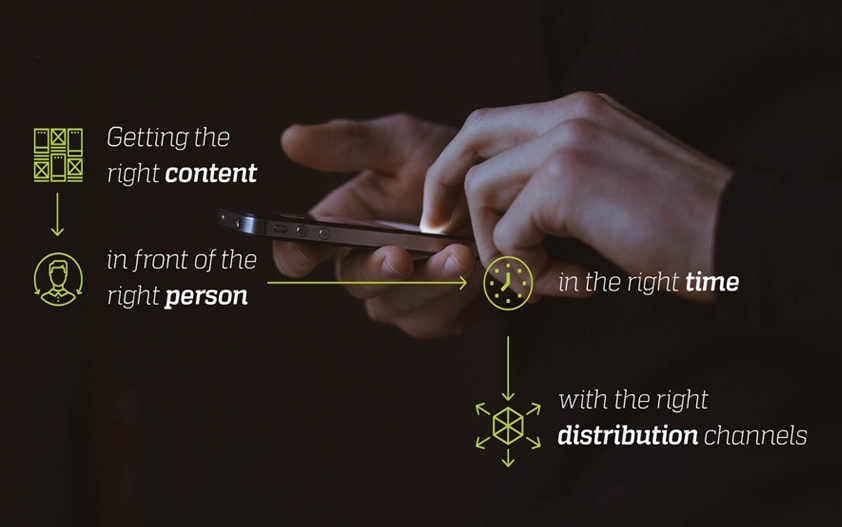
What is Inbound marketing?
Inbound marketing is the process of attracting potential customers and getting them to reach out to you. This is different to more traditional marketing (also known as push marketing or outbound marketing) where you actively reach out to potential customers through methods such as cold-calling, printed magazines, and traditional advertising. But how do you attract potential customers and get them to trust you before you’ve even pitched them your product? The answer lies in content —the foundation of the Inbound methodology. By creating carefully curated content, you’ll establish yourself as a trusted source of knowledge and attract the ideal visitors to your site, convert them into leads and then customers, and keep them engaged so they go on to promote your brand. “By publishing the right content in the right place at the right time, your marketing becomes relevant and helpful to your customers, not interruptive.” - Hubspot
Inbound marketing in a nutshell
Inbound marketing is filled with complexities, but the following four steps (based on the Hubspot Inbound methodology) summarize the main Inbound stages:- Attract. Before you do anything, you need to fully research and understand who your ideal customers or buyer personas are. Once you have identified them, you can get them to come to you.
- Find creative ways to “convert” these potential customers into leads by offering them something valuable in return.
- Turn your leads into customers.
- Continue to engage with your customers so they become promoters of your brand.
Inbound marketing in B2B
At this stage, you may be wondering whether Inbound marketing works in the world of B2B. The answer is a big loud “Yes!” In fact, Inbound marketing creates a win-win situation for you where you can get closer to your direct customers and distributors, and also increase brand awareness amongst end users to enhance end-user demand for your brand (even if you they are not buying directly from you). Read how Elcam used digital marketing to increase brand awareness>>Combining Inbound and offline marketing
We’d like to emphasize that Inbound marketing does not replace the need for interpersonal interaction with your customers – especially in B2B industries where the customer model tends to be more complex and is often based on long-term relationships. The goal is to find the right communication mix for your specific B2B business needs, market and customers. By promoting your brand through a digital dialog and an inter-personal dialog, you can achieve a more effective and efficient sales and marketing process for better business results. For example, you can combine a compelling digital campaign to encourage potential customers to visit you at a trade show, and then meet them at the event to continue a direct dialogue with them. Look out for our next blog post on the need for face-to-face communication with your customers and creative ways to combine digital and interpersonal communication (coming soon).Inbound marketing – here to stay?
Another big loud “Yes!” It’s quite simple - as more and more potential buyers turn to the Internet for answers to their challenges, they look to buy from suppliers who instill trust by answering their questions and offering solutions to their problems. This means that in order to stay relevant in the marketplace, you have to be present where your potential buyers are looking for answers - online. And that’s why everyone is fussing over Inbound marketing.The changing role of CMOs in B2B marketing
By
Miri Peled
, 15/05/2017
Customer empowerment has led to a changing CMO role as CMOs become the customer voice within their organizations. But what does this role actually involve?
min read
With the evolving nature of the marketplace, the role of the Chief Marketing Officer (CMO) is quickly transforming and becoming one of the most strategic functions in most organizations.
As a result, the skill set required of the CMO and the marketing team is also changing rapidly. Once responsible mainly for market research, corporate brand management and advertising, the CMO now has additional complex responsibilities that extend far beyond traditional marketing — including technology (digital marketing), analytics, customer experience expertise, and content.
According to Bill Lee, founder of the Center for Customer Engagement in an interview with CMO.com: “CMOs today have a real opportunity to get a competitive jump by organizing more forcefully around today’s buyer—who is changing rapidly. It’s arguably the most important trend in marketing.”



















